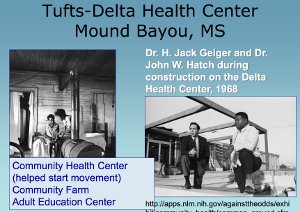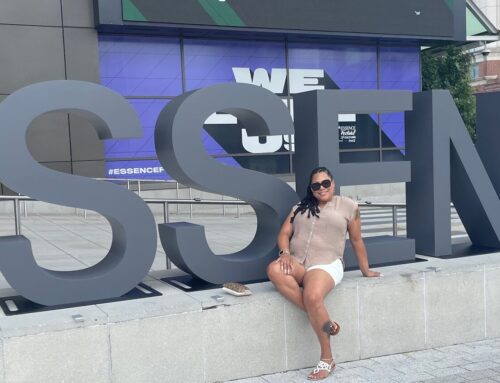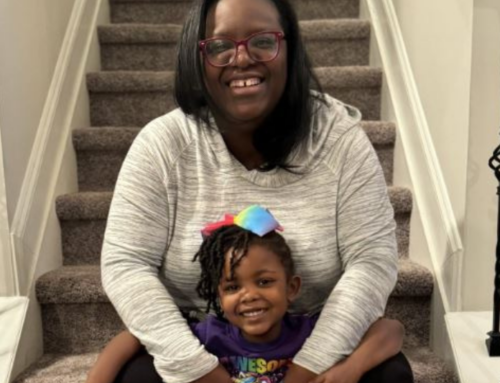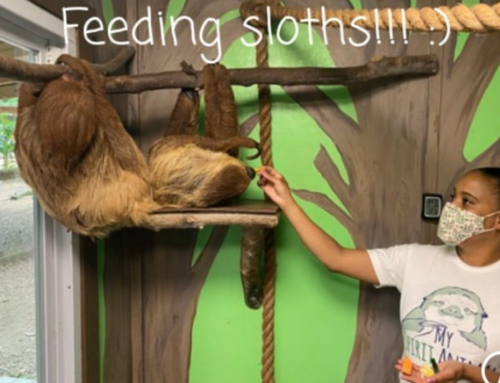I was sitting in Professor John Hatch’s “Rural Health” class in graduate school twenty-five years ago when I first really learned about community engagement. I latched onto his words, “When you go to a small, rural community [to do research, program development, or to provide support], first, just sit, listen, and observe.” Sit…listen…and observe – okay, that should be easy enough, right? But it also seemed like it could take a while to actually get anything done. But Dr. Hatch underscored the value of patience in identifying the community leader – not the loudest person, but the natural leader who people in the community look to when they need help. He suggested that we ask people who they go to when there is a genuine community crisis – a major fire, for example – when the community needs to come together, to act, to heal.
It was a simple message, and although I don’t remember the specific community stories that Dr. Hatch calmly and proudly shared with us in order to impart the message, 25 years later, I remember the intent of his message. The bottom line — he was sharing two essential life lessons for those of us who fell in love even with the word community, those of us who knew then that in some capacity we would spend the rest of our lives trying to help communities – to improve health and eliminate disparities, to ensure equitable service provision and access, and to implement models that really make sense and can lead to true community change.
The two lessons? If you want to make a difference, if you want to see a community achieve lasting change, 1) you can’t just impose your own ideas on the community; and 2) you have to involve the community in a meaningful way.
Everything started to make a little more sense.
After college, I had made my way to Washington, D.C., and eventually to the Children’s Defense Fund (CDF). For four years, I worked within walking distance of the Congressional buildings and occasionally walked those halls, visiting various offices in an effort to persuade members of Congress to vote in favor of children’s programs. I had been convinced that Washington, D.C. was where the decisions are made and where the important work needed to be done in order to most effectively help families.
I wasn’t wrong. There is no one place. However, after a while, I decided that it’s really the people back home in communities who make the difference. So, I went back to learn more about how communities work and try to make a difference there. After graduate school, I went to live in rural Nicaragua. I was interested in working with immigrant, Latino communities in the U.S., so I wanted to get a better understanding of where they were coming from and the type of community life they were used to. I knew, of course, that one community is just one community, but at least I would get a sense of how that one community worked. And when I came back to the U.S. two-and-a-half years later, I went almost directly to work at a migrant and community health center in a small town in the northeast. I was proud to have known and learned from the person who founded the first rural community health center (Dr. Hatch, along with a few others). While I worked at the health center and lived in the small community, I began to understand more about why the community engagement piece was so important. It’s not enough just to build a community health center or to promote your services. We hired people as outreach workers and community health workers (promotores) from the community to help us do outreach and health education. We went out to visit people where they lived, to do screenings, to visit again, to do health education and make it fun with “games” (for example, dínamicas like these: https://multco.us/file/16373/download) to build trust, and then eventually to bring them in to the health center. And they kept coming back, and they told their friends, and they even shared with their friends some of the lessons they learned from our health education activities.
I had done it – in the words of Lao Tzu,
“Go to the people. Live with them….”
But, then something else happened that enabled me to embraced the rest of what Lao Tzu said,
“…Learn from them. Love them. Start with what they know. Build with what they have. But with the best leaders, when the work is done, the task accomplished, the people will say ‘We have done this ourselves.”
This second part is what community engagement, and meaningful and lasting change are about.
So what happened to help me realize this? I participated in a train-the-trainer health education workshop. The curriculum was based on participatory learning. The trainer and the first module spoke of Paolo Freire, the Brazilian educator who was sometimes known as “the father of popular education.” I would say that popular education is a much more intense version of community engagement, with the ultimate goal of community empowerment, social justice, and change.
Paolo Freire pointed out the ineffectiveness of “banking education” – where the teacher is active, and the student is a passive recipient, just as Professor John Hatch had cautioned against preaching your own ideas to a passive community.
Yes, participatory education can take a little longer. It takes time to find out about people’s experiences, to start where they are, to build on what they know, and to learn together with them. But, more invested, active learners are more likely to be engaged and to direct their own positive behavior change.
And, similarly, actively engaging communities and families in a meaningful way can take a little extra effort. Usually, it’s worth it, because you might see that families stay enrolled in programs, show up to appointments, practice what they’ve learned, and you might actually find that families, neighbors, service providers, decision makers and other “leaders” work in partnership with each other. So, whatever you call it — whether purpose of community engagement is to bring a community together around an issue or initiative, or to tackle a problem or challenge a community is facing, or to empower community members, or to create social change or any kind of change…. community members can actually make the community a better, healthier, safer, and happier place to live.
What is Community Engagement?
Community engagement involves dynamic relationships and dialogue between community members and local health department staff, with varying degrees of community and health department involvement, decision-making and control. In public health, community engagement refers to efforts that promote a mutual exchange of information, ideas and resources between community members and the health department. While the health department shares its health expertise, services and other resources with the community through this process, the community can share its own wisdom and experiences to help guide public health program efforts. “Community” may include individuals, groups, organizations, and associations or informal networks that share common characteristics and interests based on place-, issue-, or identity-based factors. These communities often have similar concerns, which can be shared with the health department to help create more relevant and effective health programs.
Source: http://bangthetable.com/what-is-community-engagement/
Some additional reading:




